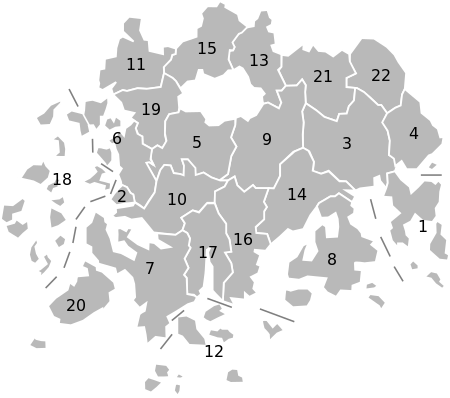South Jeolla Province
province of South Korea From Wikipedia, the free encyclopedia
Remove ads
South Jeolla Province, or Jeollanam-do (hangul: 전라남도; hanja: 全羅南道; McCune-Reischauer: Chŏllanam-do; Revised Romanization: Jeollanam-do), is a province in the southwest of South Korea.
Remove ads
The province keeps partnerships with many cities and provinces around the world.[2]
Remove ads
History
The South Jeolla province was formed in 1896 from the southern half of the former Jeolla province, remained a province of Korea until the country's division in 1945, then became part of South Korea. Gwangju was the capital of the province, until the provincial office moved to the southern village of Namak, Muan County in 2005.
Symbols of the province
The symbols of the province are:[3]
- Tree: Ginkgo - 은행나무 (Ginkgo biloba)
- Flower: Japanese camellia - 동백나무 (Camellia japonica)
- Bird: Oriental Turtle Dove - 멧비둘기 (Streptopelia orientalis)
- Fish: Red seabream - 참돔 (Pagrus major)
Geography

The province is part of the Honam region, and is bounded on the west by the Yellow Sea, on the north by Jeollabukdo province, on the south by Jeju Strait, and on the east by Gyeongsangnam-do province
The province has an area of 12,256.9 square kilometres (4,732 square miles)[4] with a population, as for 2010, of 1,9404,55[1] and a density of 158.3 inhabitants per km².
There are almost 2,000 islands along the coastline, about three quarters of which are uninhabited. The coastline is about 6,400 kilometres (4,000 miles) long. Some of the marine products, in particular oyster and seaweed cultivation, are leading in South Korea.
The rivers Somjin, Tamjin and Yeongsam form plains that are very good for growing rice. The largest river is the Yeongsan, 115 kilometres (71 miles) long; it flows to the southwest and forms a estuary in the Yellow Sea at Mokpo.
Climate
In coastal areas, the climate is mild and humid, with annual rainfall of 1,289 millimetres (50.7 inches) and average temperatures of 13–14 degrees Celsius (55–57 degrees Fahrenheit). Summer is wet, windy and dry winter. The west side of the Sobaek mountains receives heavy snowfall.[5]
Administrative divisions
Jeollanam-do is divided into 5 cities (si) and 17 counties (gun). Listed below is the name of each entity in English, hangul, and hanja.
Remove ads
References
Other websites
Wikiwand - on
Seamless Wikipedia browsing. On steroids.
Remove ads




